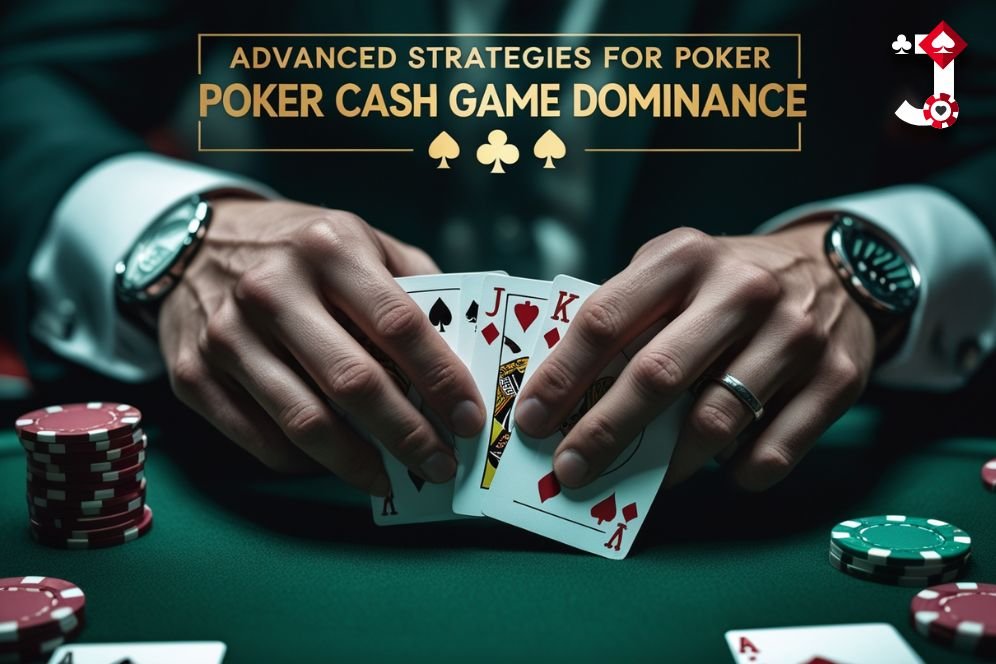Advanced Strategies For Poker Cash Game Dominance

Elevate your poker cash game with these strategies!
To truly dominate poker cash games, players must transcend basic strategy and delve into a sophisticated understanding of game theory, psychological manipulation, and nuanced decision-making. This isn't just about knowing hand rankings; it's about mastering the art of exploiting opponents, adapting to dynamic table conditions, and maintaining unwavering mental fortitude.
The Evolution of Hand Readings
A fundamental shift for advanced players is moving beyond attempting to pinpoint an opponent's exact hand. Instead, the focus is on understanding their hand range – the entire spectrum of hands they could plausibly hold given their actions. Every preflop raise, every postflop bet, check, or fold refines this range.
The truly dominant player takes this a step further by thinking in frequencies. How often does a specific opponent bluff in a given spot? What percentage of their range will they continue with on a certain board texture? This probabilistic approach enables more precise and profitable reactions, as you're no longer guessing but making informed decisions based on observed patterns.
The Interplay of GTO and Exploitative Play
Game Theory Optimal (GTO) play establishes a mathematically unexploitable baseline. It dictates balanced strategies that, in theory, cannot be beaten over the long run, even by a perfect opponent. However, the reality of a poker cash game is that most opponents are far from GTO.
This is where exploitative play shines. It involves identifying and leveraging the specific weaknesses and imbalances in your opponents' strategies. If a player consistently folds to continuation bets on the flop, you can widen your c-betting range to exploit this tendency. If another rarely bluffs, you can make lighter value calls on the river. The most dominant cash game players are not rigid GTO robots; they possess the fluidity to transition between GTO foundational principles and targeted exploitative adjustments, always seeking the line with the highest expected value (EV) against the specific players at their table.
Mastering Positional Leverage and Advanced Bet Sizing
The adage "position is king" holds even greater weight at the advanced level. Being in position grants an informational edge, allowing you to observe your opponent's actions before making your own. This enables:
- Pot Control: You can decide whether to swell the pot with strong hands or keep it small with marginal ones, influencing the stack-to-pot ratio (SPR) on future streets.
- Equity Realization: You can check back with drawing hands to see a free card, or bluff more effectively when your opponent shows weakness.
Advanced bet sizing moves beyond conventional percentages. Consider:
- Overbetting: Making bets larger than the pot (e.g., 1.25x or 2x pot) can be incredibly powerful. This is effective for value when you have a nut advantage (your range contains more absolute monster hands) or for bluffs when you hold blockers that reduce the likelihood of your opponent having a strong hand.
- Block Betting: A small, out-of-position bet on the river, often with a marginal showdown hand, designed to prevent a larger bet from your opponent and get to showdown cheaply.
- Polarized vs Linear Betting: Understanding when to bet a range that is either very strong or a pure bluff (polarized) versus a range that represents a wide spectrum of hand strengths (linear) is key to maximizing EV.
Calculated Aggression and Deception Post-Flop
Dominant cash game players are aggressive, but their aggression is highly calculated and designed to exert maximum pressure.
- Check-Raising: This deceptive maneuver, where you check to induce a bet and then raise, is a potent weapon. It can extract significant value from weaker hands or force folds from stronger but vulnerable holdings.
- Floating and Delayed C-bets: These plays involve calling a bet on an earlier street with a marginal hand or a draw, with the intention of taking down the pot on a later street when your opponent shows weakness or the board improves your hand.
- River Bluffing: The river represents the largest pot in most hands, offering the highest reward for successful bluffs. Crafting credible bluffing lines on the river, especially with hands that have no showdown value but block your opponent's strongest holdings, is a hallmark of truly advanced play.
The Unseen Edge: Mental Fortitude and Continuous Analysis
Beyond the tactical, a robust mental game is non-negotiable for cash game dominance.
- Tilt Control: Recognizing the triggers and effectively mitigating tilt – the emotional state that leads to suboptimal play – is paramount. Emotional decision-making is a direct path to losing money.
- Rigorous Self-Analysis: Consistently reviewing hand histories, utilizing poker tracking software, and objectively identifying "leaks" (areas of weakness) in your game are crucial for ongoing improvement.
- Table Selection: Perhaps the simplest yet most effective advanced strategy. The easiest way to increase your win rate is to consistently play against weaker opponents. Identifying and migrating to "soft" tables is a mark of a savvy cash game player.
- Patience and Discipline: Cash games are marathons, not sprints. The ability to wait for advantageous situations, avoid forced plays, and stick to your well-thought-out strategy, even during downswings, is a defining characteristic of a long-term winner.
Achieving dominance in poker cash games is an iterative process requiring dedication, analytical thinking, and emotional resilience. By embracing these advanced strategies, continuously studying, and adapting to the dynamic landscape of the poker table, you can cultivate a formidable edge and consistently extract maximum value.
June 26, 2024
Dec. 18, 2024
Oct. 23, 2024
Leave a reply